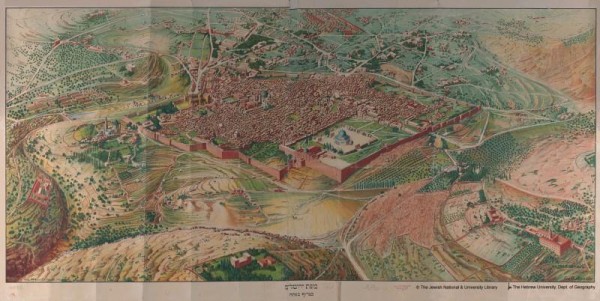Meir Margalit for Sinpermiso
Jerusalem burns. Since they already four months a wave of unrest has swept East Jerusalem, and at this stage of events, no one can predict where it will lead. This uprising has very particular characteristics: it is spontaneous, lacks leadership and is directed almost exclusively by teenagers and young people who do not reach the age of 20. Everything exploded after the brutal murder of Muhamad Abu Khder, a 16-year-old on July 3, and gained enormous dimensions during the war in Gaza. Since then, the violence has spread throughout East Jerusalem and the Israeli clumsy reaction, based solely and exclusively on the use of police force, and enhanced by a series of terrible government decisions such as allowing settlers to appropriate nine buildings in the village of Silwan, or, what is more dangerous, allowing entry of nationalist Jews to Temple Mount for the Jewish holidays in October, fuelled the flames to a point that no one knows now how to contain it. A good description of the events can be read in Al-Monitor. While we cannot predict how this process will end, the partial effects of this uprising are already evident: the slogan “Jerusalem, eternal and unified capital of Israel” has collapsed, failed miserably. The only problem is that the Israeli government has not yet realised.
The Israeli response has been extremely severe and exaggerated. It is because young insurgents have challenged the Israeli government, undermining its authority and for the Israeli government the stability of its institutions depends on rebuilding its image of authority and the restoration of the balance of power between Israelis and Palestinians. The purpose of the repression is not to restore order but fear and record again in the flesh of the Palestinians the price they must pay for disobeying Israeli rules and dare to challenge its authority. These raids, which fit within what could be described as acts of state terror have included mass arrests, flooding streets with unprecedented amounts of tear gas and nauseating fluids, demolitions, confiscation of vehicles for debts to state institutions, closing shops and harassment of parents to force them to restrain their children, because otherwise they must pay personal fines when their kids go on demos. We emphasize this: the purpose of the raids is not to restore order, as it is hoped that with the coming rains the riots will wear out by themselves, but to reestablish fear, cornerstone of every totalitarian system.
But even if the police managed to quell the uprising, the worn out mantra that Israel repeats since the annexation of East Jerusalem in 1967, the “united Jerusalem”, has become obsolete. Today, one does not have to be a “leftist” to acknowledge that Jerusalem is more divided than ever, that the invisible walls between the two parts of the city are higher than those that previously divided the city and Palestinian residents are unwilling to live life under the boots of the Israeli occupation. The paradox is that for 65 years Israel has done everything possible to make sure this model does not work. Discriminatory municipal policies, humiliation and systematic aberrations are the breeding ground in which young people who at this very moment are throwing stones at all the symbols of Israeli sovereignty which cross their path grew up. This outbreak was expected. All those who know the reality in the field, knew it was a matter of time for the explosion occur: too many arsonists are on the loose in this city to avoid it. The latest developments in the Mosques Esplanade, or the Temple Mount as the Israelis call it, have added to political conflict a relentless religious dimension. In these pages of Sinpermiso I have written that Jerusalem is a “non-city”, for lack of common denominator among its inhabitants, and excessive politicization of human relationships. In such a tense climate a healthy city cannot be built, a space in which there is a minimum sense of belonging and solidarity. That is why the model of “unified city” has no future and if the police forces succeed in restoring order at this point, no doubt it will explode again.
Jerusalem must inevitably split as soon as possible. Given the complexity of the space pattern, this division requires a high degree of creativity and goodwill. The two parts of the city are so intertwined that it is almost impossible to divide geographically and no way to trace a consistent dividing line. That is why the solution can happen through a functional division of the city, that is, the creation of two municipalities in the same territorial space: the western part would become the capital of the state of Israel, while the Oriental part will constitute the capital of the Palestinian state, when it is established, and both capitals will share a unified city, without borders or walls separating its two parts. This organizational model may seem impossible at first sight. Indeed, it is complex and there is no history of bi-national cities, which operate two capitals for two nations. But the fact that there is no precedent does not mean that the idea is illusory and impractical. Assuming that there is no other feasible solution, we must mobilise all our energy and creativity to make this formula feasible.
But as we said earlier, the Israeli government has not yet realised that the city should be divided. To do this, we need, as we have been saying since long ago, the help of the international community. The future of Jerusalem is too important to be left to Israeli political politicians.
Meir Margalit, a member of the Editorial Board of Sinpermiso (Without Permission), resides in Jerusalem, where he is an active member of the Israeli peace camp.










